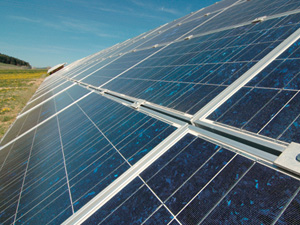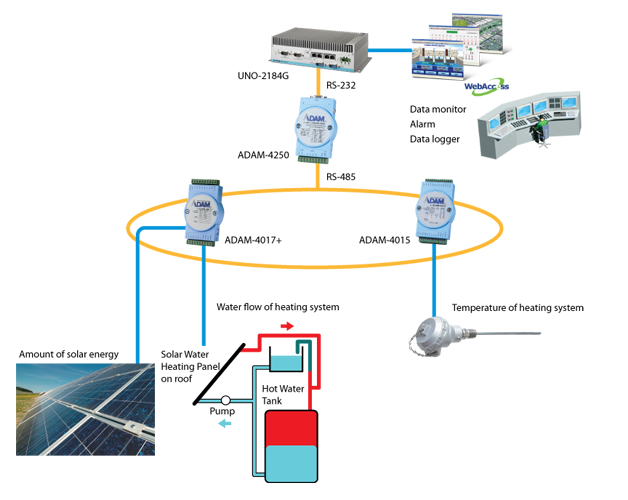Solar Energy Water Heating System Monitoring

Market: Power & Energy
Location: Portugal
Customer: PRIREV
Project Introduction:
The history of solar collectors dates back to before 1900 where they and were simply black-painted tanks mounted on roofs. In 1896 Clarence Kemp of Baltimore, USA enclosed a tank in a wooden box, thus creating the first 'batch water heater' as they are known today. Although flat-plate collectors for solar water heating were used in Florida and Southern California in the 1920s there was a surge of interest in solar heating in North America after 1960, but especially after the1973 oil crisis.
Today Israel and Cyprus are the per capita leaders in the use of solar water heating systems with over 30%–40% of homes using them. They first introduced in Israel during the 1950s when during a fuel shortage, the government forbade heating water between 10 pm and 6 am. But despite the abundance of sunlight in Israel, solar water heaters were used by only 20% of the population by 1967.However, following another energy crisis in the 1970s, the Israeli government passed a law requiring the installation of solar water heaters in all new homes (except high towers with insufficient roof area). As a result, Israel is now the world leader in the use of solar energy per capita with 85% of the households today using solar thermal systems (3% of the primary national energy consumption), estimated to save the country 2 million barrels (320,000 m3) of oil a year, the highest per capita use of solar energy in the world.
In 2005, Spain became the first country in the world to require the of installation photovoltaic electricity generation in new buildings, and the second (after Israel) to require the installation of solar water heating systems in 2006.
System Requirements:
To build upon this ever changing technology, engineering company PRIREV, needed to be able to monitor the amount of solar energy, the temperatures and water flow of a solar energy water heating system for an Olympic sized swimming pool provided by their newly developed solar panel. They also needed to be able to directly monitor these values and their alarms on LCD panels and have these values saved for future reference.
System Implementation:
Advantech’s Adam modules provided the customer with a distributed solution that used acquisition modules connected through RS485 and with only a two wire bus for data transfer from all the sensors. This system architecture has two core benefits: the first is that it allows more acquisition module sensors to be added to the system at any time and secondly it’s very easy to add more tags to the software in order to monitor and record those values on a PC.
Project Implementation:
| Product |
Description |
ADAM-4520 |
Isolated RS-232 to RS-422/485 Converter |
ADAM-4017+ |
8-ch Analog Input Module with Modbus |
ADAM-4015 |
6-ch RTD Module with Modbus |
UNO-2184G |
Intel® Core™ i7 Automation Computer with 4 x GbE, 2 x Mini PCIe, DVI/DP/HDMI |
WebAccess |
Browser-based HMI/SCADA Software |
System Diagram:

Conclusions:
The customer needed to record the solar light power, different temperatures of the water and the flow of the water inside the pipes and because of their good quality to price ratio Advantech’s Distributed Acquisition Modules were the simplest and easiest system to achieve this whilst allowing for future expansion of the system. Once installed the customer was able to calculate the efficiency of water being heated through the use of solar energy and automatically create reports. |